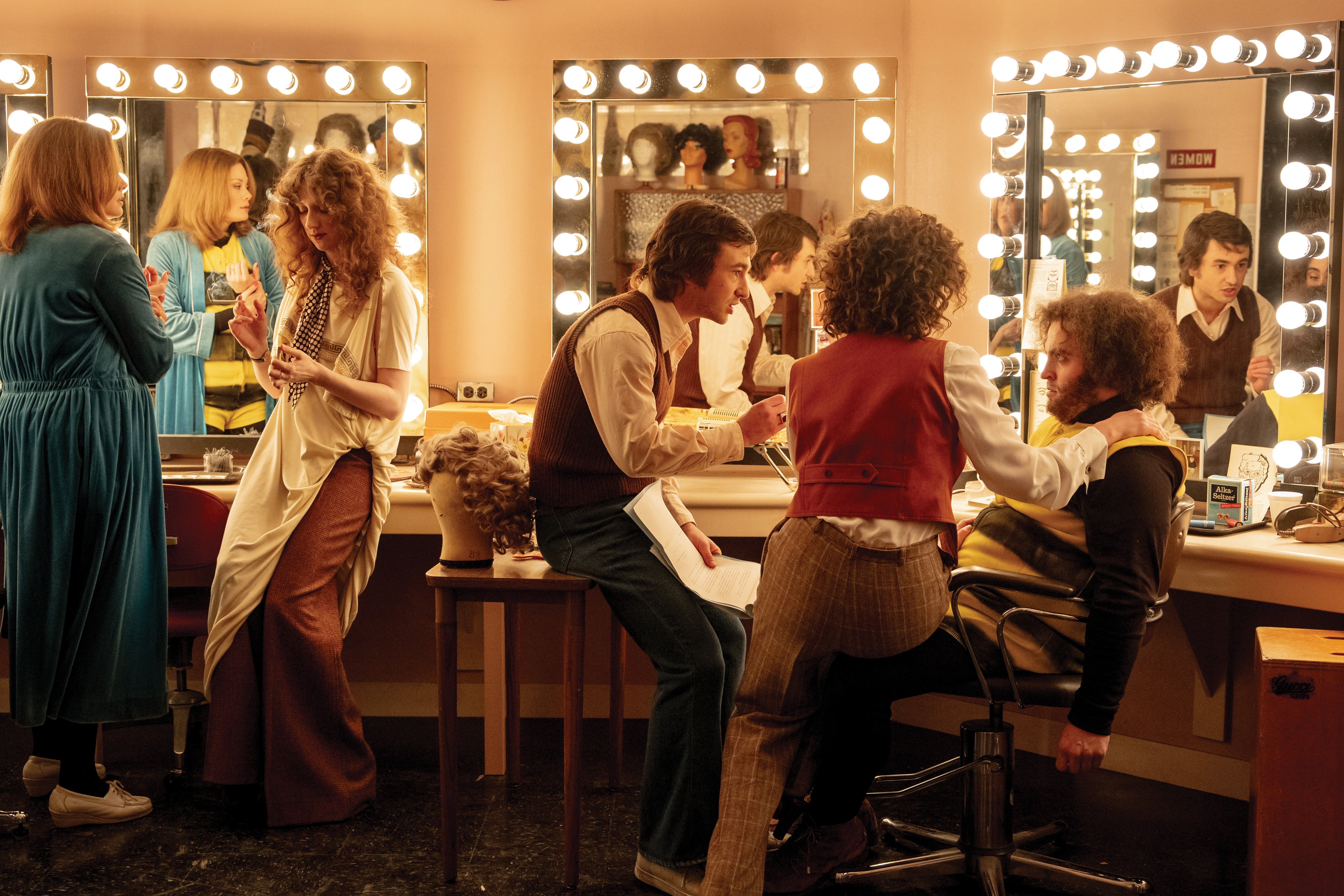
“Live From New York” for Saturday Night
Eric Steelberg, ASC and director Jason Reitman choose 16mm to re-create the chaotic birth of Saturday Night Live.
Depicting the behind-the-scenes mayhem leading up to the first broadcast of Saturday Night Live on Oct. 11, 1975 called for an appropriately kinetic approach, and cinematographer Eric Steelberg, ASC and director Jason Reitman decided that a mobile camera, exacting choreography and 16mm motion-picture negative would be its cornerstones.
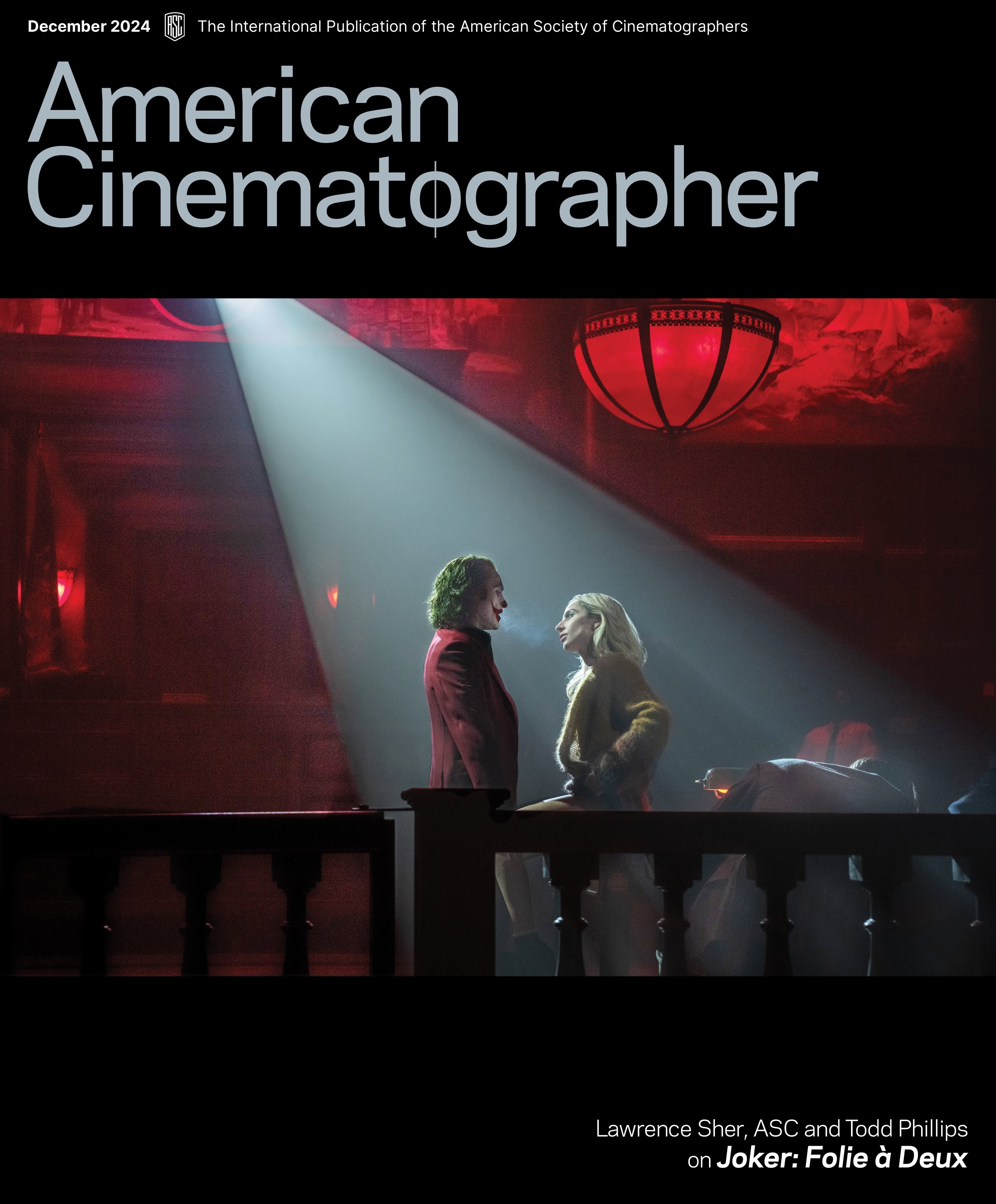
“I wanted to capture the feeling of being in the room as they’re about to go live and present comedy and music in a way no one had ever thought of — culture is about to change,” says Reitman, who has collaborated with Steelberg on nine features, beginning with Juno in 2007. “If we’re dropped onto the eighth floor at 30 Rockefeller Plaza in 1975, what would we see, and what would the energy be? I wanted to pick that up in real time.
“For a long time, I’ve wanted to tell a story that takes place in 90 consecutive minutes, and this fit that structure perfectly,” he adds. “I wanted the last line in the movie to be, ‘Live from New York, it’s Saturday night!’”
At the center of the maelstrom is SNL creator and producer Lorne Michaels (Gabriel LaBelle), who navigates temperamental performers, censor-baiting writers and jaded craftspeople in his efforts to prepare the show to go live. An ensemble of young actors portrays the original cast — Cory Michael Smith as Chevy Chase, Ella Hunt as Gilda Radner, Dylan O’Brien as Dan Aykroyd, Lamorne Morris as Garrett Morris, Matt Wood as John Belushi, Kim Matula as Jane Curtin and Emily Fairn as Laraine Newman — as well as Nicholas Braun in dual roles as puppeteer Jim Henson and guest performer Andy Kaufman.
Early Exploration
During their initial conversations, Steelberg and Reitman considered whether it was feasible to do the entire movie in one shot. “I wasn’t sure we could do it, but we did R&D it for a while,” the cinematographer says. “We had sets designed and technical discussions on what digital format we’d have to shoot, and thought maybe we’d have to break it up into a few sections and stitch it together.”
Following a period of further discussion, the project was put on hold as Reitman produced and Steelberg shot Ghostbusters: Frozen Empire. While making that movie, Reitman decided to abandon the one-shot approach for Saturday Night and shoot on film. “I said, ‘Great, I love film — as long as it doesn’t feel like a documentary and we’re trying to do some weird affectation with the camera over everybody’s shoulder,’” says Steelberg.
Then the idea of shooting 16mm came up. The pair had contemplated shooting the 1980s-set The Front Runner (AC Dec. ’18) on that format, but ultimately opted for 35mm because they and the producers felt they couldn’t get the desired resolution for crowd scenes. But they didn’t have the same concern on Saturday Night; in fact, they wanted lower res.
“We said, ‘Let’s do things that make us uncomfortable, [like] shoot 16mm and have longer shots without coverage.’”
— Eric Steelberg, ASC
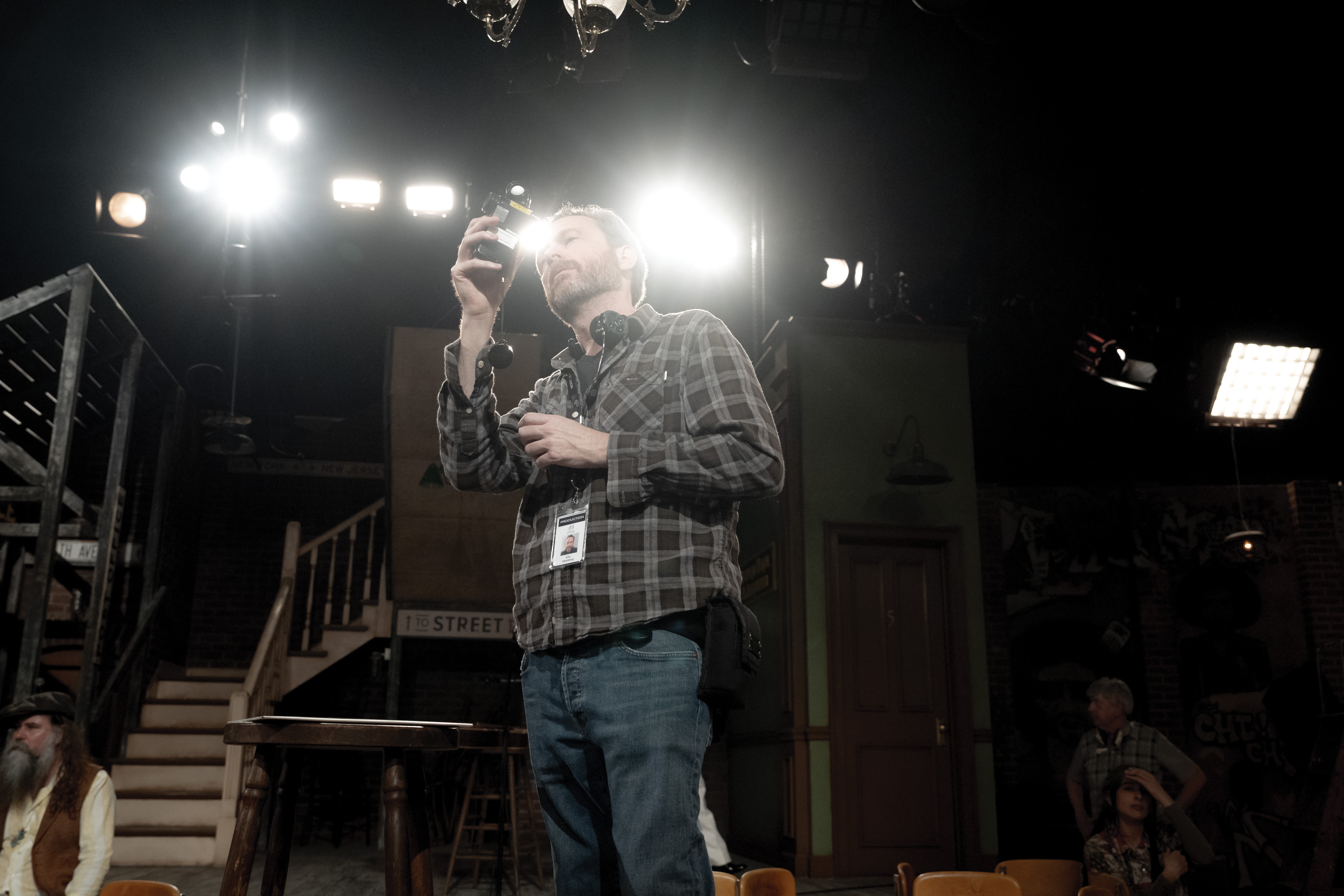
“We wonder if we made the right decision on The Front Runner because we want these films to feel like documents of the past, and when you watch it digitally, it’s so crisp and clean,” Reitman says. To prep for Saturday Night, he continues, “we watched films from that era, and you could feel the grain. The stocks and scanning have improved enough that when you look at 16mm today, it reminds you of what 35mm looked like in the ’70s.”
Key references were films directed by Michael Ritchie, including Downhill Racer [shot by Brian Probyn, BSC; AC Nov. ’69], The Candidate [Victor J. Kemper, ASC; AC Sept. ’72] and Smile [Conrad Hall, ASC; AC Oct. ’75]. “There’s something about the way Ritchie handles those worlds — the Olympics, a Senate race, a beauty pageant — that feels less presented and way more immersive,” Reitman observes. “So, we studied the way the camera moves in [relation] to the choreography of the cast.”
Steelberg cites Network, shot by Owen Roizman, ASC (AC April ’77), and After Hours, shot by Michael Ballhaus, ASC, as other standout references: “We enjoyed [seeing] a certain freedom in those — a way of shooting that differed from other movies at that time, whether it was the combination of camera and tone, lighting and tone, or movement and tone.
“Seeing filmmakers who had successfully done that before gave us confidence,” he continues. “We said, ‘Let’s do things that make us uncomfortable, [like] shoot 16mm and have longer shots without coverage.’”
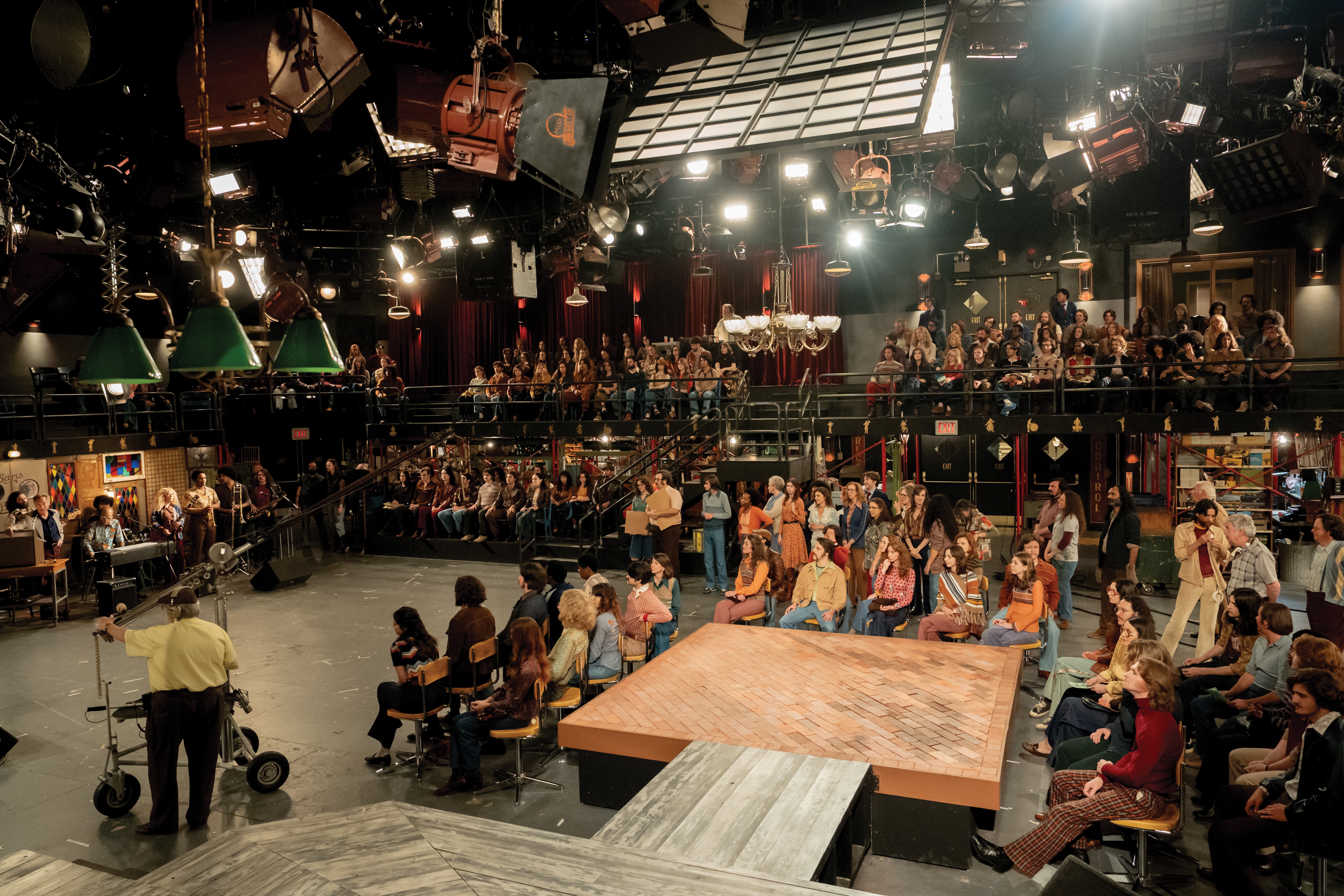
“The Image Has a Heartbeat”
Steelberg conducted many tests comparing Kodak’s Vision3 500T 7219 to Vision3 200T 7213. “The 500T was just too grainy,” he says. “Jason thought it looked great, but I felt people would have a hard time seeing past it. I suggested that shooting everything on the 200T, which has much finer grain, and processing it normally would look pretty good on the big screen.
“Even when 16mm is parked on a talking head or static frame, there’s always movement in the image because of the grain and texture,” he continues. “It’s like the image has a heartbeat, and there’s always tension, which was great because we were trying to make sure there’s never ‘nothing happening.’ There’s this anxiety: Are they going to make it to air as we get to 11:30?”
Steelberg used an Arriflex 416 camera and paired it most often with a 35mm-format Fujifilm/Fujinon 18-85mm Premier PL (T2) and a Canon 8-64mm (T2.4) — all Panavised (with PV mounts) and provided by Panavision. The zooms were usually used as variable primes as the camera moved among the characters in backstage hallways, but A-camera operator Matthew Moriarty also executed some sudden zoom-ins to suggest the camera reacting to the emotion in a scene.
“If I list the things I’m most lucky for in my life, meeting Eric is one of them. I can’t imagine making movies without him.”
— director Jason Reitman
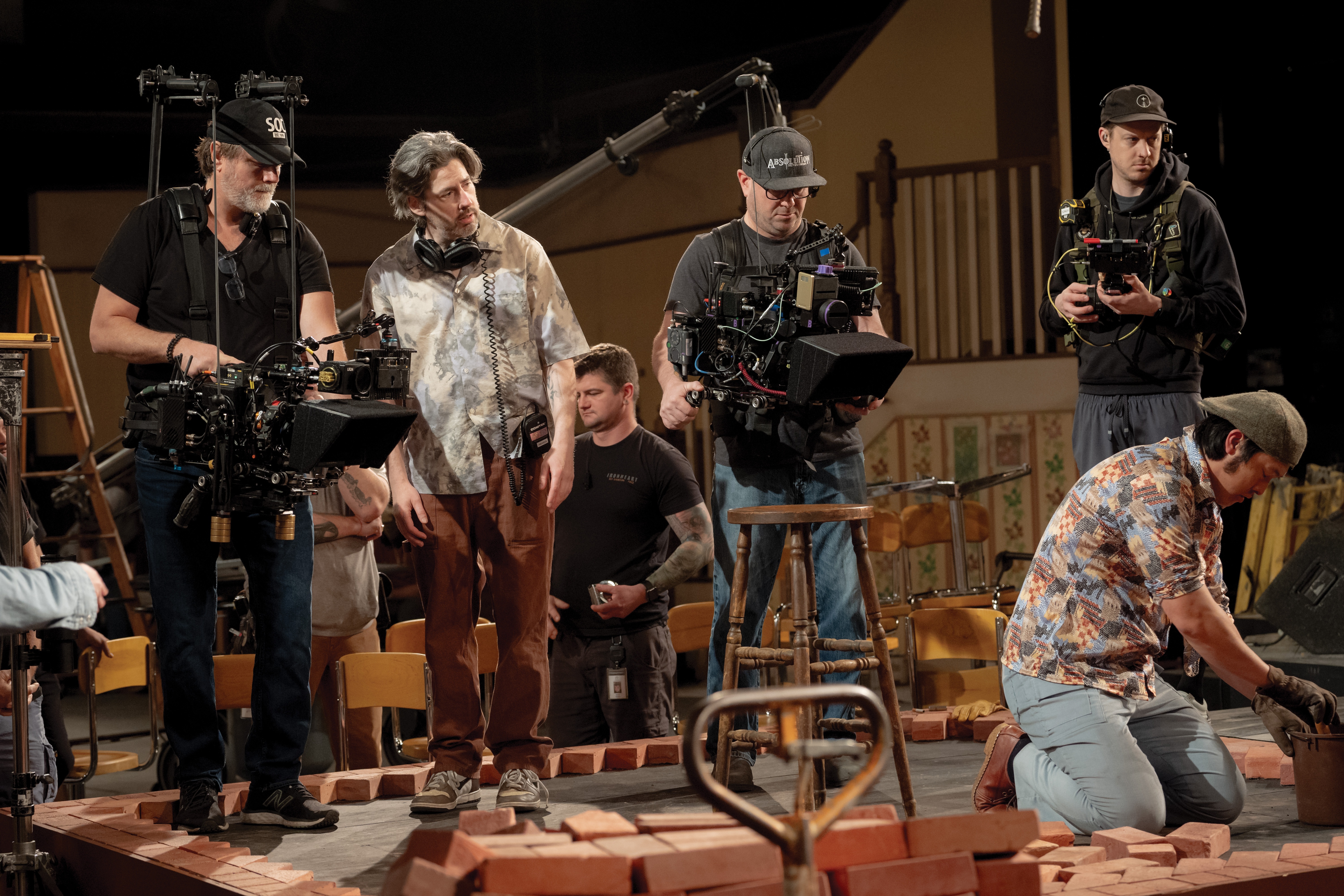
The A camera was mostly on a remote head, so having a zoom vs. having to switch prime lenses saved time,” says Steelberg. “But we also did a lot of whip-panning and would bury focal-length changes in some of them. We’d shoot in one direction at 20mm, then quickly pan over to something else and zoom into a 27mm, 30mm or even more. [A-camera 1st AC] Sebastian Vega did a fantastic job.” He adds that “the B camera would be shooting reactions and other dialogue and performance, since we always had so many cast members in any given scene.”
Steelberg used the Canon zoom on the A camera when space was tight, or to reframe while handheld. Arri/Zeiss Master Prime and Ultra 16 prime lenses at the wider end came into play for handheld work and the odd Steadicam shot, and for two nights of exterior location work in New York. The latter included shots of a page (Finn Wolfhard) handing out tickets outside NBC Studios and Belushi ice-skating at Rockefeller Center clad in a bumblebee costume. In both cases, Steelberg exposed for T2.
For interiors, the prowling camera was usually on a Cinemoves Matrix gimbal on a dolly. “We looked at Steadicam, handheld, handheld on a dolly and handheld on a sandbag on the dolly, but having the camera on a remote head on a Chapman PeeWee was the best combination,” says Steelberg. Moriarty adds, “We used the Cinemoves Cineflip to cant the Matrix head toward the center of the dolly, reducing its overall footprint.”
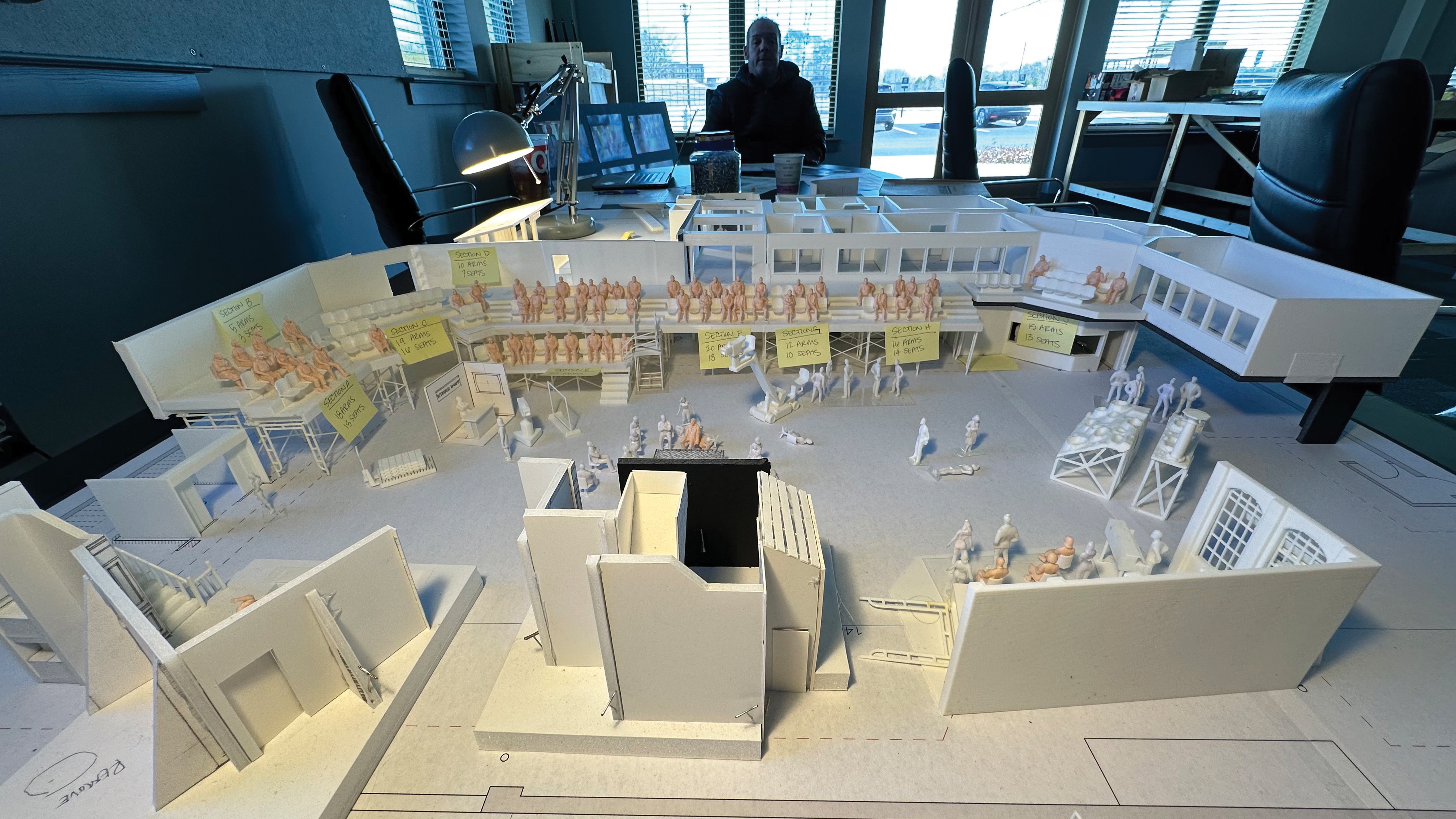
Moriarty shot handheld work — including a tense interaction in an elevator involving Michaels, NBC producer Dick Ebersol (Cooper Hoffman) and network executive David Tebet (Willem Dafoe) — using a Walter Klassen SlingShot 2.0 Rig support system. “We added some brass weights to the bottom to dampen high-frequency jitters and create the feel of a heavier camera,” he adds.
Steelberg likens the system to “a backpack with bungees that allowed Matt to quickly move the camera, but also hold it pretty steady in place if he needed to. When he walked with it, it would absorb a lot of the steps. Steadicam often felt too slick — like we would lose the tension and energy.”
Steadicam did prove best, however, for a couple of shots, including one in which a frustrated Henson follows Michaels and talent coordinator Neil Levy (Andrew Barth Feldman) up a stairwell to the next floor and down the hallway. “Although Steadicam didn’t look right in bigger spaces, it was much better for the stairwell than the other methods we tried,” Steelberg says.
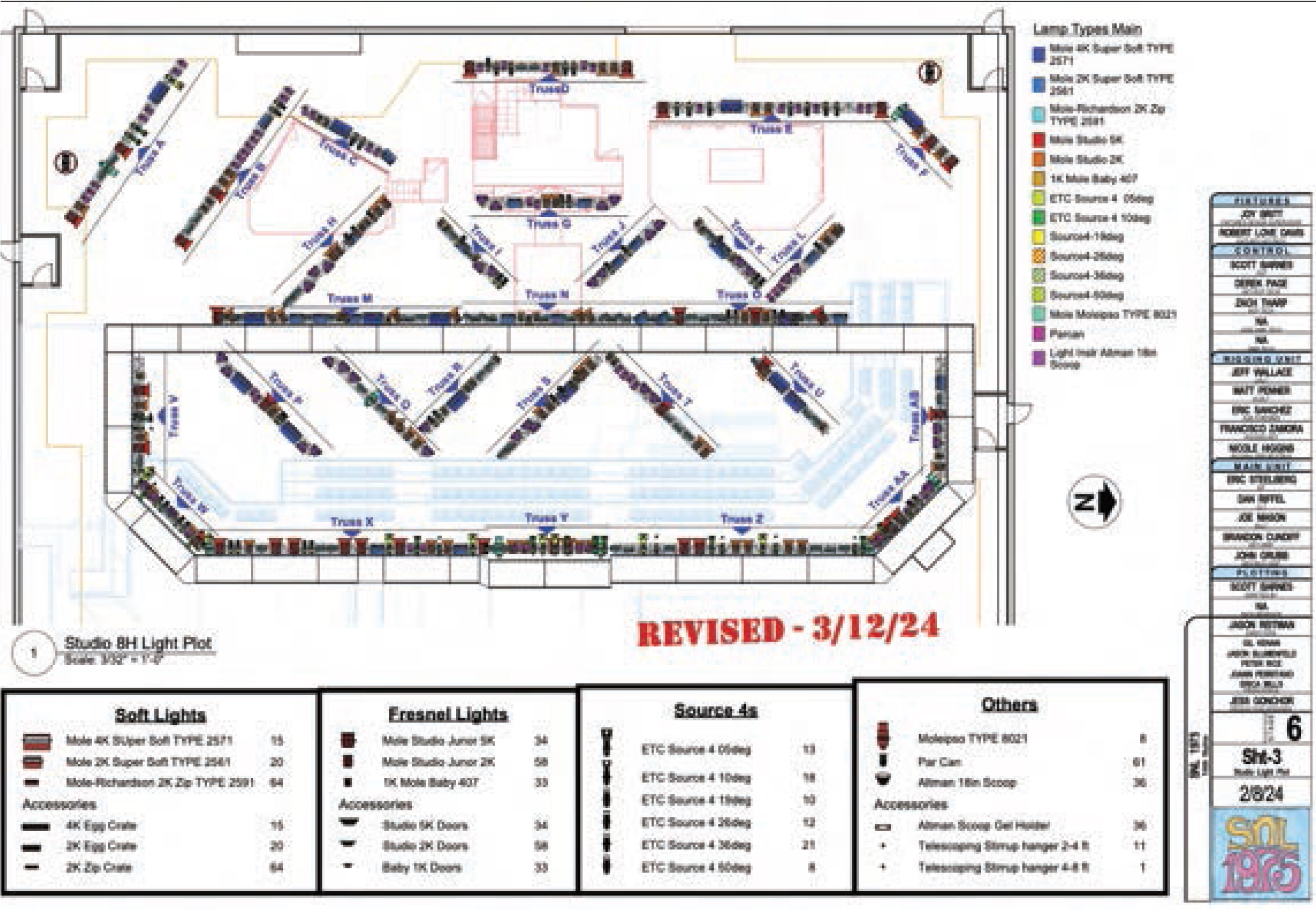
Planning for Controlled Chaos
Steelberg estimates that 60 percent of the shoot was single camera. When B-camera operator Cale Finot came into play, the cinematographer explains, “We cross-covered some scenes, or, if a camera was doing the front part of a long shot, then B camera would be waiting at the end of the run to pick up a different angle. The way I lit allowed B camera to pick up reactions from a secondary character in the scene, because there’s so many characters everywhere.”
Achieving the controlled chaos central to the story required extensive planning for the 30-day shoot. Reitman recalls, “Each day, all cast and crew would start at ‘home base’ [aka the SNL set]. I had a whiteboard, and, like a football coach, I would draw out where each actor and the camera and the background was going to go. Then everyone would go to their mark. Inevitably, the first dozen takes would be unusable because it was so much choreography.”

He continues, “Moriarty, Eric and I would talk about, ‘This moment feels unnatural — the camera got there too soon or too late. How can we get the dolly farther back and angle it into the corner and then pan this way?’ We were figuring out all that. Then, a couple of hours in, everyone would hold their breath, and we’d nail it.”
The production built a two-story set at Trilith Studios in Georgia that included SNL’s Studio 8H and the offices on the next floor up. “Everything was built as one practical set,” Steelberg notes. “It was all connected, including hallways and rooms.” During the cinematographer’s 12 weeks of prep, he worked with Gonchor to implement practicals into the set.
“Nearly all the lighting was built into the set or hidden,” says Steelberg. “There was hardly any traditional lighting off the floor. Most of my prep was spent designing where the practical lighting had to be in the studio and hallways relative to the actors. We spent weeks before, taking stills and blocking the whole movie as the set was being built around us.”
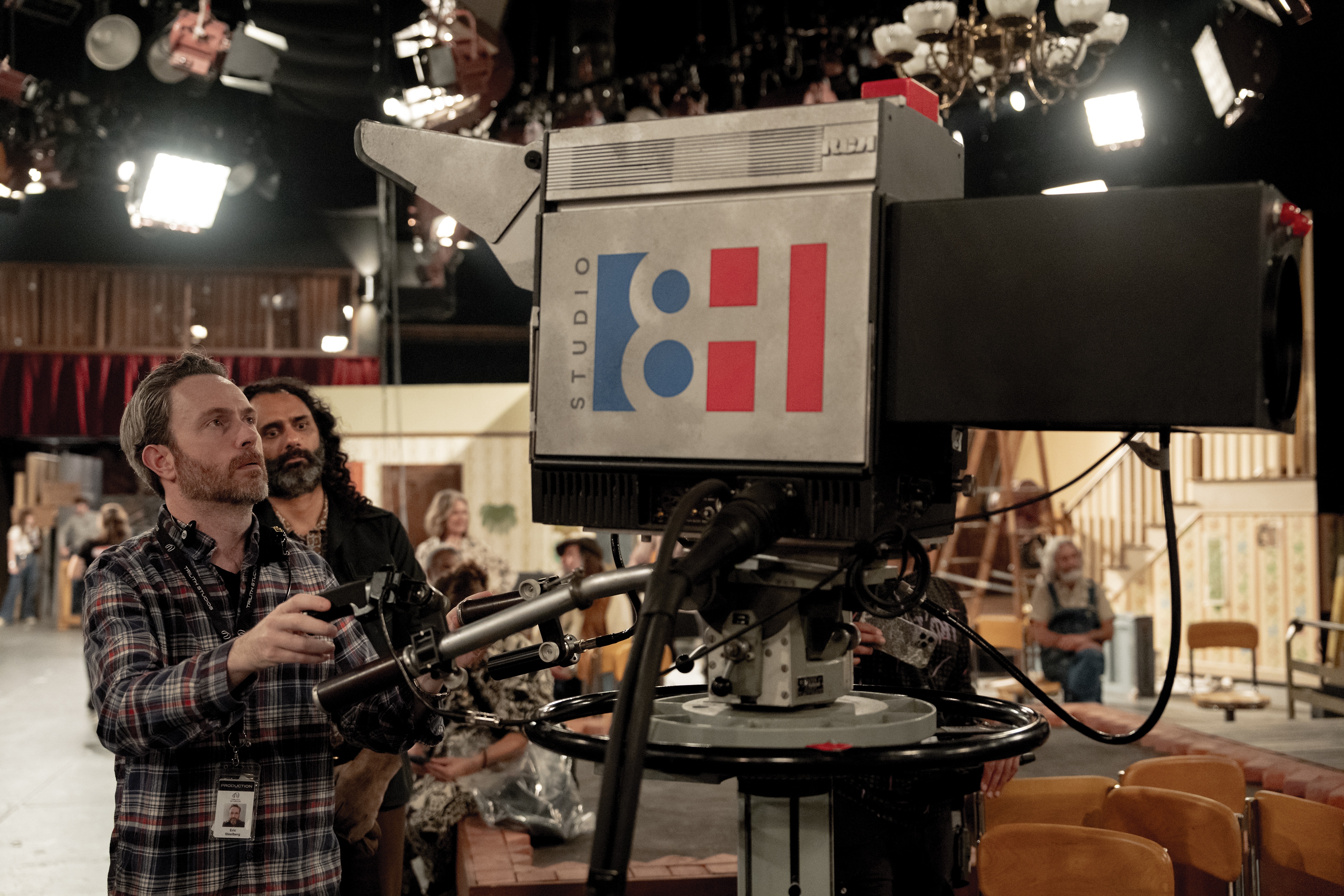
Sourcing period-correct practicals led to some unique finds. “We spent a lot of time with the set decorators finding things like, for the writers’ room, old fluorescents with a gold diffusion insert that spread the light and looked period,” says Steelberg, who cites fixtures foreperson Joy Britt for her contributions to the project. Steelberg’s use of a 1/8 Tiffen Pearlescent for the film proved useful with many practicals. “I was finding they would flare in streaks that I didn’t like,” the cinematographer says. “The filter did nothing to soften the image, but it gave our sources a little glow. Having lights bloom this way says ‘period’ to me.
“I told chief lighting technician Dan Riffel we’d need a lot of light in the studio, and I didn’t want LEDs — I wanted incandescent,” he continues. “Jason had a frequent note: ‘Are you sure this isn’t going to be too bright?’ I’d take a still photo and show him a rough presentation of the exposure to demonstrate that it wouldn’t photograph that way.’”
Riffel was also on hand early, and one of his tasks was designing a lighting rig over the studio. “I found old stencils I had used with drawings of old Mole-Richardson movie lights,” he recalls. “We had pipes over the studio with these historically accurate lights. Everything was on chain motors so we could drop them into the back of shots. [Lighting console programmer] Scott Barnes would dim down certain lights, and we’d add [CTB] so they wouldn’t look too warm.”
Riffel and his crew arranged a wide variety of fixtures over the stages, including 4K and 2K Mole-Richardson Molequartz Super-Softlites, 2K Baby “Zip” Softlites, 5K Fresnels, PAR cans, and ETC Source Fours. The gaffer explains, “We had 2Ks and 5Ks on the ground that we’d use to add accents where needed, but we could generally stack up enough soft lights in the rig to create a fill level. In every direction you looked, there were multiple sources to look into, and we could come up with the right combination to give us what we needed volume-wise.”
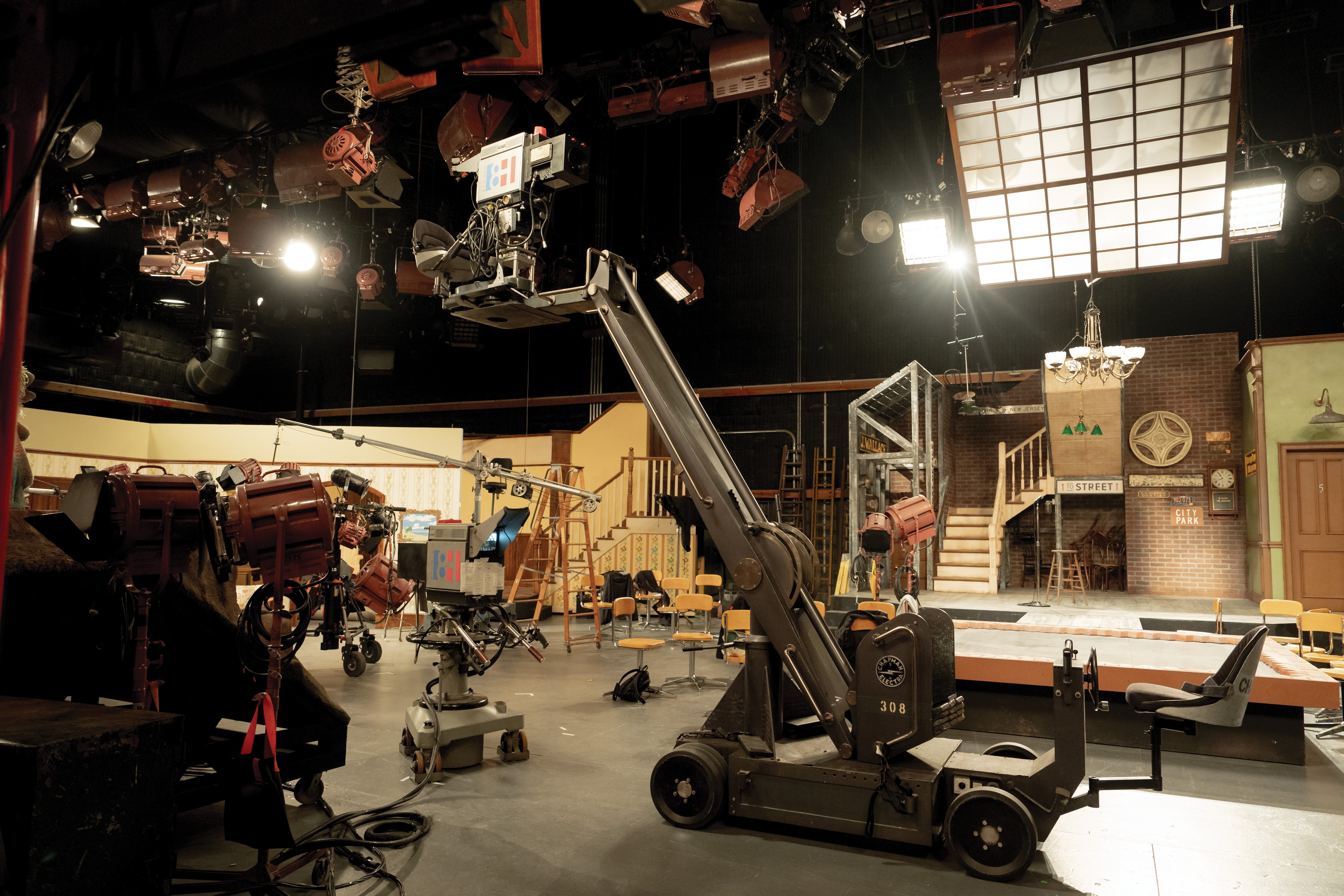
Playing It Live
To lend the movie a real-time feel, SNL rehearsals that were being taped and the eventual start of the broadcast were piped in live to monitors in the NBC control room, where we see Tebet, Michaels and SNL writer Rosie Schuster (Rachel Sennott) on edge as air time nears. “We used Blackmagic Design Micro Studio cameras embedded in prop studio cameras, down-converted and piped through a processor to create an analog image on the old control-room monitors,” Steelberg explains.
“We made our lives harder by playing that live, but it added an energy and a chaos to our own film crew that we wanted to feel.”
Reitman wanted the control room completely dark except for the monitors, but Steelberg successfully argued for a bit more illumination. “We had to see what’s going on; a lot of the tension in the movie happens in there. I wanted it to be dark but still see texture and people’s eyes twitching — the cigarette smoke, the ashtrays. We had to feel how small the room is, how hot and how claustrophobic.”
Each row in the control room was topped by track lights lamped with JDR halogen bulbs to create hot spots. “We felt a lot of bounce light back up from the tables, and I’d sneak in an Astera Helios tube to help with that,” says Riffel. “There was just enough when Willem Dafoe and the others were standing back there. Sometimes we’d point an eerie can light on them because they were right against the wall."
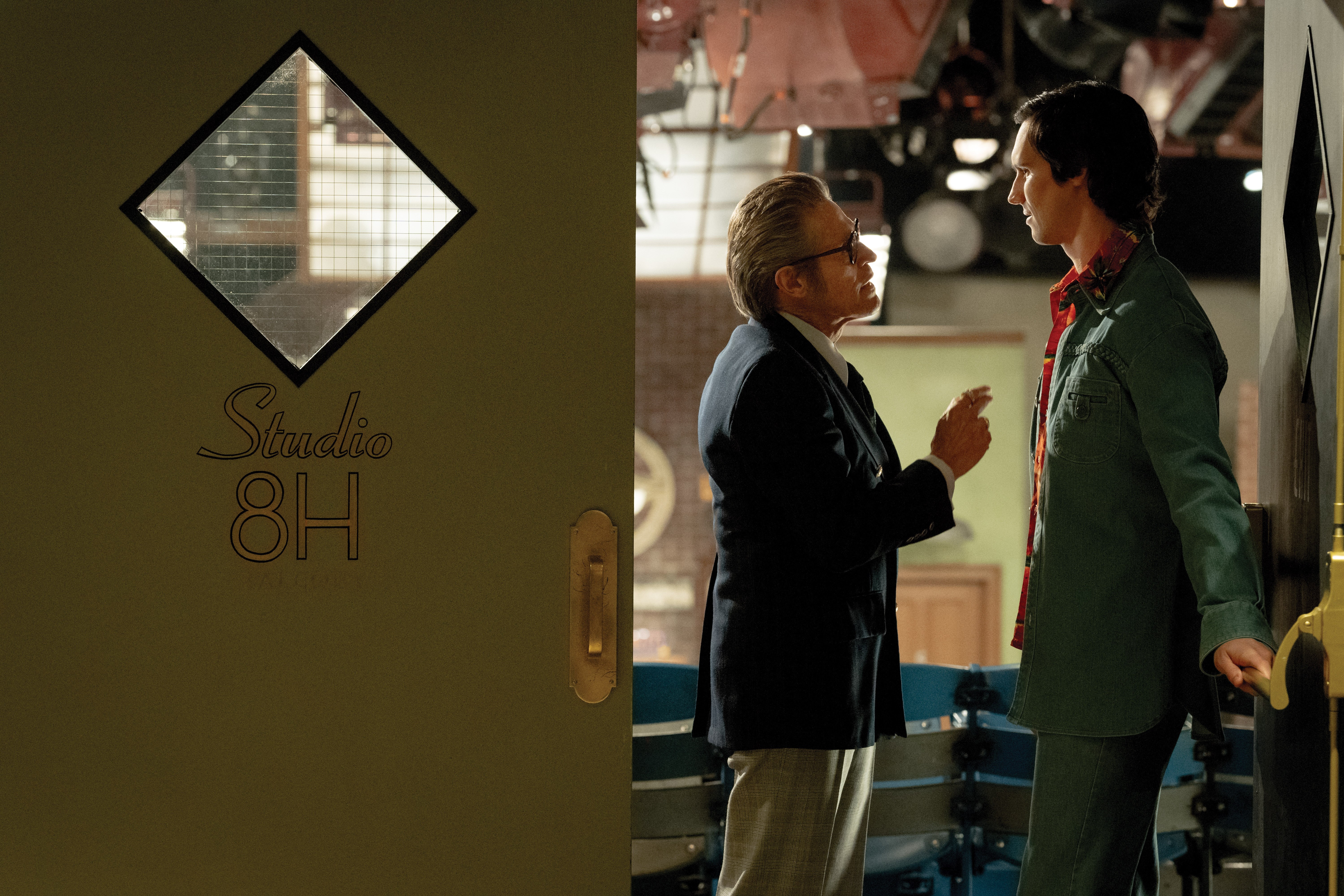
Steelberg credits Company 3 senior colorist and ASC associate Stefan Sonnenfeld for his contributions during early testing, which made the final grade more efficient. “He had just done Maestro [shot by Matthew Libatique, ASC] on film, and he had valuable suggestions about color and contrast.”
Dailies were scanned at 4K at Kodak Film Lab Atlanta, and those scans were used for final conforming at Company 3; Kodak Atlanta also processed and scanned the negative. Steelberg and Reitman were present for the two-week final grade. “We got through the movie in a week, and then went back and had second thoughts about how contrasty or bright a scene should be,” Steelberg recalls. “We didn’t do much to color. That’s the beauty of film: It’s so balanced, and the color curve is spectacular.”
Reitman notes that he and Steelberg, who met in high school, had last shot 16mm together when they were teenagers. “If I list the things I’m most lucky for in my life, meeting Eric is one of them,” he reflects. “I can’t imagine making movies without him. He’s my partner, and our process begins so early, before there’s a script. When I was younger, I didn’t realize how valuable that was. As I got older and visited more sets, I realized that what we have is unique.”
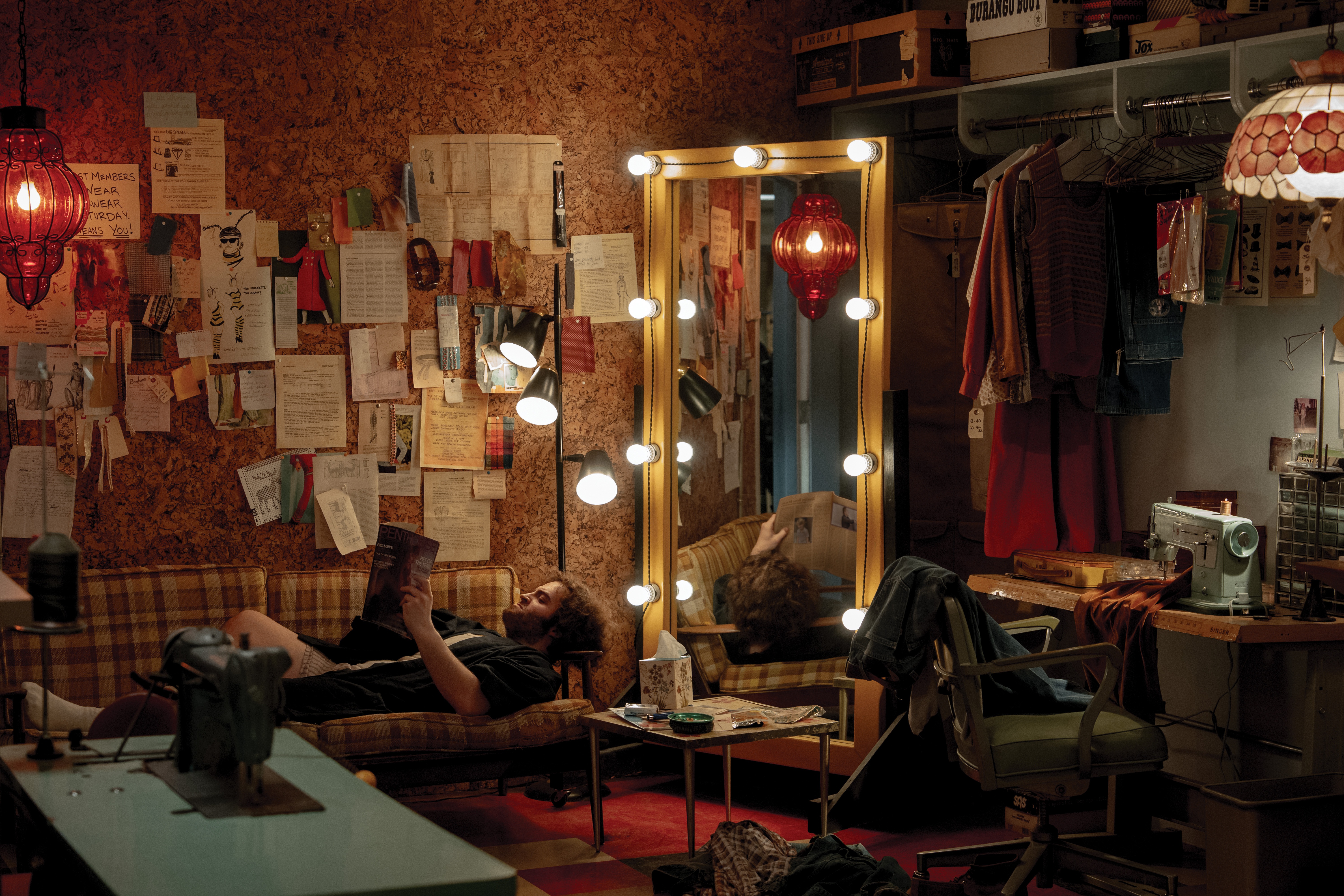
Tech Specs
1.85:1
Super 16mm
Cameras | Arriflex 416, Blackmagic Design Micro Studio
Lenses | Fujifilm/Fujinon Premier; Canon 8-64; Arri/Zeiss Master Prime, Ultra 16
Film Stock | Kodak Vision3 200T 7213
Subsequent to speaking to AC for this article, Steelberg was interviewed by Nancy Schreiber, ASC for this episode of Clubhouse Conversations:






